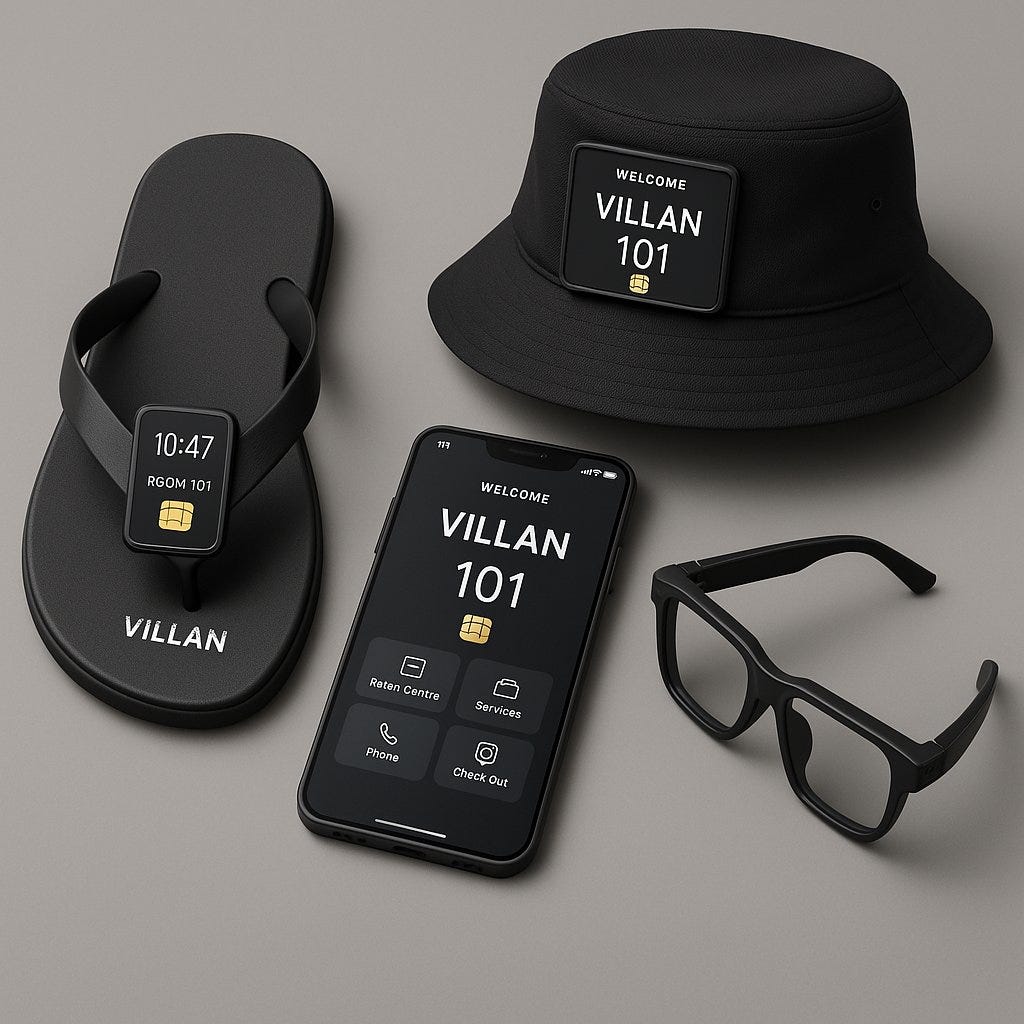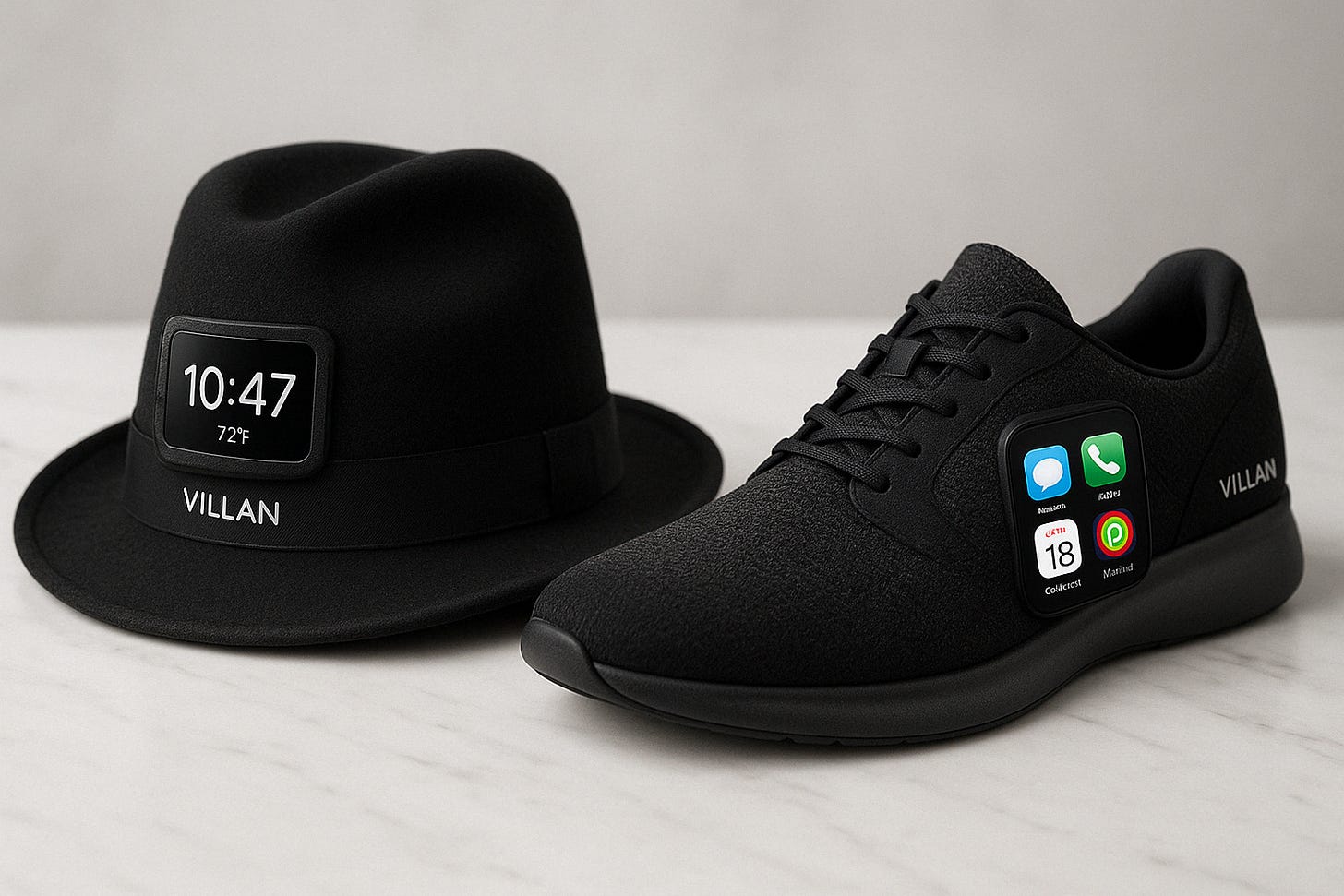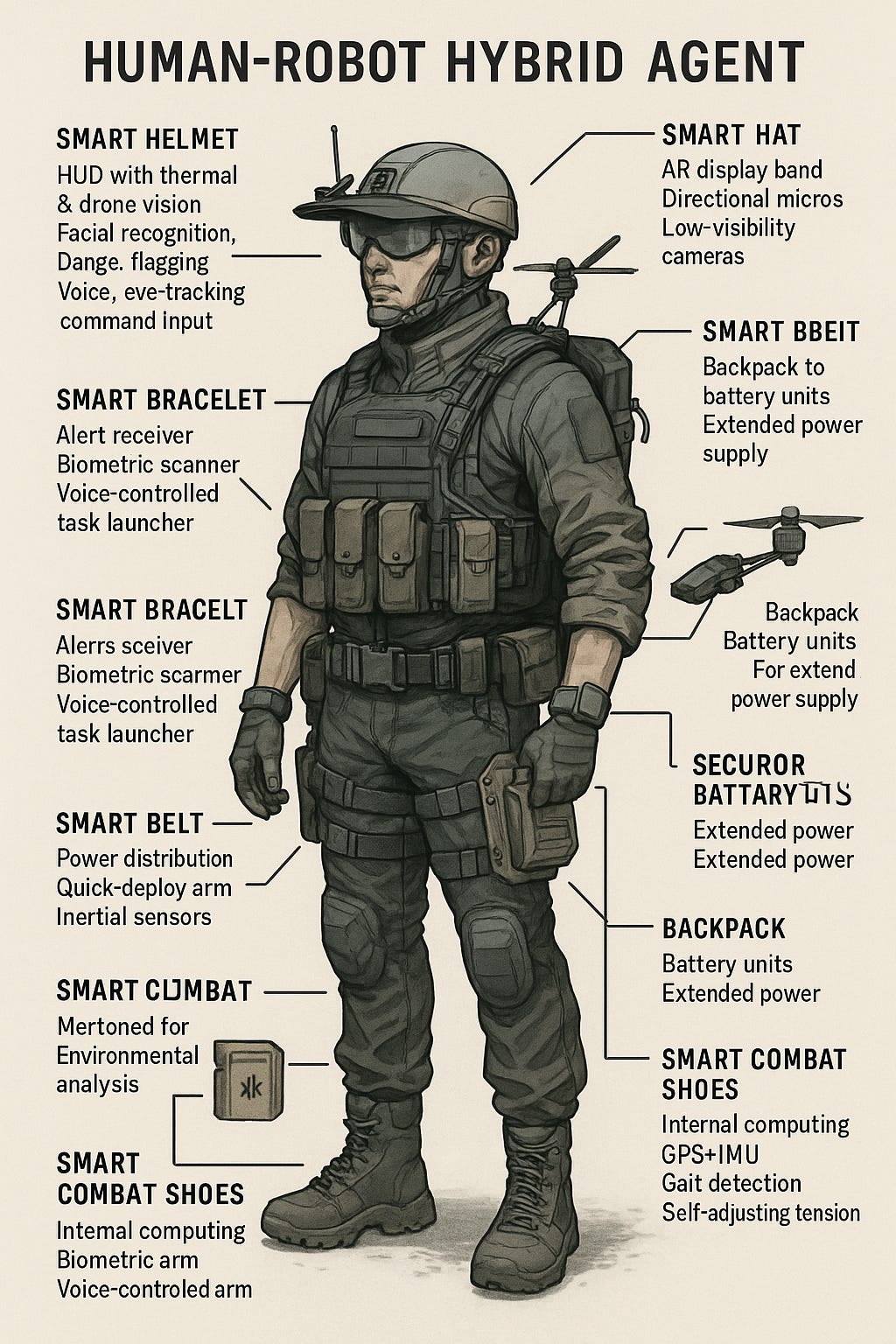The Smart Hat: A Wearable Computing Hub for the Future
The Smart Hat: A Wearable Computing Hub for the Future
By Ronen Kolton Yehuda (Messiah King RKY)
🌐 Introduction
Wearable computing is evolving beyond watches, glasses, and shoes. A new frontier is the Smart Hat—a multifunctional wearable device designed not only as an accessory but also as a computing hub. Like the Smart Shoes concept, the Smart Hat provides processing power and connectivity for an entire ecosystem of personal devices, from smart screens to smartphones, smartwatches, smart bracelets, and smart glasses.
The Smart Hat merges fashion, technology, and practicality, giving users both style and seamless access to advanced digital functions.
🏗️ Core Features
1. Computing Hub Functionality
The Smart Hat contains an onboard processor and communication modules that allow it to act as a central hub for nearby devices. Instead of overloading each wearable with heavy processors, the hat distributes computing power across the ecosystem.
- Synchronization with smartphones, smartwatches, smart bracelets, smart glasses, and smart screens.
- Local processing reduces latency, improving AR/VR, health tracking, and AI-assist functions.
- Acts as a mobile server for personal data storage and task execution.
2. Connectivity and Communication
- SIM Card Slot – Enables independent cellular connectivity without depending on a phone.
- Bluetooth, Wi-Fi, NFC, and 5G – For seamless communication with other wearables and IoT devices.
- Microphone and Speakers – Integrated for voice commands, calls, and notifications. While no embedded headphones are included, the Smart Hat supports pairing with external earbuds or headphones.
3. Audio and Interaction Layer
- Embedded Speakers provide ambient sound for calls, navigation, or notifications.
- Voice Recognition powered by AI assistants.
- Gesture and Head-Movement Controls allow users to interact without needing to touch their phone or screen.
4. Ergonomic and Design Considerations
- Lightweight materials for comfort in daily use.
- Modular design to allow integration of solar cells or extended batteries.
- Fashion flexibility—hats, caps, or helmets can be adapted into Smart Hat variants.
⚙️ Applications
- Daily Use: Calls, messages, navigation, and music without needing to reach for a phone.
- Professional Environments: Hands-free communication for logistics, fieldwork, and construction.
- Healthcare and Accessibility: Real-time health monitoring when paired with smart bracelets and glasses.
- Entertainment and AR/VR: Enhanced gaming and immersive experiences when paired with smart glasses.

📜 Patentability and Innovation Potential
The Smart Hat combines multiple known technologies (wearable computing, SIM-enabled communication, microphones, speakers, hub functions). Whether it can be patented depends on how novel the integration is.
-
Possible Patentable Claims:
- The hat-as-hub model—a wearable computing system in the form of a head accessory that distributes processing power to other devices.
- A specific configuration of SIM connectivity, embedded microphone, speakers, and hub control optimized for multi-device synchronization.
- Novel ergonomic and modular designs (e.g., interchangeable hat shells with embedded electronics).
-
Challenges:
- Many patents already exist for smart wearables (smart glasses, helmets with sensors, headsets).
- To succeed, the application must focus on unique aspects (e.g., the hub distribution role, modular design, or ecosystem integration).


By Ronen Kolton Yehuda (Messiah King RKY), August 2025
🔍 Abstract
The Smart Hat is a head-mounted wearable that extends the paradigm of distributed wearable computing. Unlike conventional smartwatches or glasses, which concentrate processing and connectivity within a single device, the Smart Hat functions as a computing hub—providing shared processing, communications, and audio capabilities to an ecosystem of connected devices.
This article details the technical architecture, hardware subsystems, communication interfaces, and potential patent claims for the Smart Hat platform.
🏗️ System Architecture
The Smart Hat integrates embedded electronics within a conventional head accessory form factor. Its architecture is divided into four subsystems:
-
Processing Unit
- Low-power ARM-based CPU or RISC-V architecture.
- Integrated AI accelerator (e.g., NPU/Tensor cores) for real-time voice recognition and AR/VR workloads.
- Local memory (2–8 GB RAM) and onboard storage (32–256 GB).
-
Communication Module
- SIM Card Slot with LTE/5G cellular modem.
- Multi-band Wi-Fi 6/7, Bluetooth 5.3, NFC for short-range pairing.
- Optional LoRaWAN / UWB for industrial or IoT-specific deployments.
-
Audio & Interaction Subsystem
- MEMS Microphones (multi-array for beamforming and noise cancellation).
- Embedded Micro-Speakers oriented downward for discreet open-ear sound.
- Voice-command AI agent integration.
- Gesture/head-tilt sensors (accelerometer + gyroscope) for non-contact interaction.
-
Power & Energy Management
- Lithium-polymer curved battery integrated into the brim or crown.
- Solar cell integration in outer fabric for trickle charging.
- Energy management unit with wireless charging support.
🔗 Hub Functionality
The Smart Hat operates as a computational hub for other personal devices:
- Smartphones → Offloading compute-intensive tasks (e.g., AI inference, AR rendering).
- Smartwatches & Bracelets → Continuous health monitoring with centralized data fusion.
- Smart Glasses → Low-latency AR/VR rendering through short-range high-bandwidth wireless.
- Smart Screens → Projection and streaming interface for hands-free display.
By centralizing compute and connectivity, the Smart Hat reduces redundancy and power draw across smaller devices.
🧪 Use-Case Scenarios
-
Hands-Free Communication
- Voice calls directly via SIM or paired devices.
- Microphone + speaker array supports ambient awareness.
-
Augmented Reality Integration
- Paired with smart glasses for rendering overlays.
- Head orientation sensors provide spatial referencing.
-
Field Applications
- Logistics, construction, and security operators use the Smart Hat as a control node.
- Industrial variants can integrate rugged casings and protective helmets.
-
Healthcare & Accessibility
- Audio navigation for visually impaired users.
- Hub-based processing for medical wearables.
⚙️ Technical Challenges
- Thermal Management: Housing processors in a head accessory requires advanced heat dissipation. Options: phase-change materials, passive ventilation channels.
- Weight Distribution: Electronics and batteries must be balanced across crown/brim for comfort.
- Antenna Placement: Optimized multi-band antennas must minimize SAR exposure while maximizing coverage.
- Security: Onboard secure enclave for SIM, biometric authentication, and encrypted device-to-device communication.
📜 Patentability Considerations
While head-mounted wearables (smart helmets, AR glasses, Bluetooth hats) exist, the Smart Hat’s novelty lies in:
- Hub-Based Computing Architecture: Hat as the primary compute and network node for a multi-device ecosystem.
- Integration of SIM, microphones, and speakers without headphones, while maintaining open-ear awareness.
- Modular Energy Design: Curved batteries + solar-integrated textiles within a fashion accessory.
Patent Pathway:
- Utility patent claims could cover the hub role, the specific subsystem arrangement, and methods of distributed processing from a wearable hat form factor.
- Design patents may apply to modular hat structures embedding electronics.
🧭 Conclusion
The Smart Hat represents an evolution of wearable computing by shifting from device-centric intelligence to hub-based orchestration. With its combination of connectivity, audio, and processing power, it has the potential to become a critical node in personal ecosystems, while remaining ergonomic and fashion-compatible.
From a technical perspective, the Smart Hat requires careful engineering of thermal management, antenna placement, and modular power systems. From a legal perspective, patent opportunities exist in its hub architecture, integration methods, and modular design.
 The Smart Hat: Technical and Market Outlook
The Smart Hat: Technical and Market Outlook
By Ronen Kolton Yehuda (Messiah King RKY), August 2025
💰 Development Costs (Estimated)
Bringing the Smart Hat from concept to commercial product requires investments across R&D, prototyping, hardware manufacturing, and certification.
1. R&D and Prototyping
- Electronics design (CPU, connectivity, sensors): $1.5–2M
- Industrial design & ergonomics: $500K–1M
- Prototype iterations (3–5 cycles): $1–2MSubtotal: $3–5M
2. Hardware Manufacturing Setup
- Tooling & molds (hat shells, battery casing, modules): $2–3M
- Component sourcing (batteries, ARM processors, SIM modules, MEMS microphones): $4–6M (initial batch ~100K units).
- Assembly lines (outsourced to contract manufacturers in Asia): $1–2M setup.Subtotal: $7–11M
3. Software & Ecosystem Integration
- Custom OS layer / firmware: $1–2M
- AI voice agent integration: $500K–1M
- App ecosystem (mobile + desktop apps): $2–3MSubtotal: $3.5–6M
4. Testing & Certification
- Telecom certifications (FCC/CE, SIM, 5G): $1–2M
- Wearable safety & SAR compliance: $500K–1MSubtotal: $1.5–3M
5. Marketing & Launch
- Branding, design, global campaigns: $2–3M
- Partnerships with telecom & fashion brands: $1–2MSubtotal: $3–5M
📦 Estimated Unit Costs
-
BOM (Bill of Materials per hat): $120–180
- CPU + modem: $30–40
- Battery & solar textile: $20–30
- MEMS mics + speakers: $10–15
- Connectivity modules: $20–25
- Sensors (IMU, GPS, NFC): $10–15
- Hat shell & assembly: $30–40
-
Retail Price Range: $399–599 (premium version up to $799).
Gross margins (40–50%) are possible if scaled to >500K units annually.
🌍 Market Potential
1. Target Segments
- Tech Consumers: Early adopters of AR/VR, wearables.
- Healthcare & Accessibility: Hands-free computing for elderly or disabled.
- Enterprise & Industry: Logistics, construction, defense, and security use.
- Fashion-Tech Collaborations: Partnerships with major hat and apparel brands.
2. Market Size Estimates
- Global Wearables Market 2025: ~$160B (growing ~12% CAGR).
- Head-mounted wearables (helmets, AR glasses, audio hats): ~$20–25B segment.
- Smart Hat TAM (Total Addressable Market): ~$5–7B initially (blending audio wearables + AR/VR accessories).
If adoption follows the curve of smartwatches, the Smart Hat could reach 10–15M units/year within 5 years, representing $5–10B annual revenue potential.
🧭 Strategic Positioning
- Differentiation: Unlike smartwatches/glasses, the Smart Hat combines hub computing, SIM connectivity, and audio interactivity in a fashion-compatible form factor.
- Partnership Opportunities:
- Telecom carriers (bundling with SIM/data plans).
- Fashion brands (Nike, Adidas, New Era, luxury designers).
- AR/VR companies (Meta, Sony, Villan ecosystem).
- Expansion Path:
- Consumer hats/caps → industrial helmets → fashion collabs → military/security versions.
📜 Patent Leverage
Patents strengthen market positioning by protecting hub-based computing architecture in headwear. Owning IP could:
- Secure licensing revenue from fashion brands integrating electronics.
- Block competitors from simply rebranding existing smart helmets.
- Enable partnerships with telecoms on SIM-enabled wearables.
✅ Conclusion: The Smart Hat requires ~$20–30M to launch but has multi-billion dollar market potential, especially if positioned as both a fashion-tech product and a core computing hub for the wearable ecosystem.
The Smart Hat: Fashion Meets Technology
By Ronen Kolton Yehuda (Messiah King RKY), August 2025
🎩 Introduction
In the age of smartwatches, smart shoes, and smart glasses, a new player is ready to join the world of wearables: the Smart Hat. More than just a fashion accessory, the Smart Hat is designed to act as a personal hub, giving users seamless connectivity, voice interaction, and computing power—right from their headwear.
It represents the natural evolution of wearable technology, combining style with intelligence.
🌐 What Is the Smart Hat?
The Smart Hat is a wearable device disguised as a hat or cap, built with technology that connects and powers other smart devices. Unlike ordinary hats, this one includes:
- SIM card slot for cellular connectivity.
- Microphones for calls and voice commands.
- Speakers for music, navigation, and notifications.
- Wireless connections (Bluetooth, Wi-Fi, 5G) to link with smartphones, smartwatches, smart glasses, and more.
This makes the Smart Hat not only a personal assistant, but also a control center for all your gadgets.
With the Smart Hat, everyday life becomes easier:
- Hands-Free Communication: Answer calls without reaching for your phone.
- Voice Commands: Ask for directions, play music, or send messages.
- Seamless Connectivity: Your hat becomes the hub that links your watch, phone, bracelet, or smart glasses.
- Entertainment on the Go: Listen to podcasts, audio books, or music directly through the built-in speakers.
👔 Style Meets Technology
One of the Smart Hat’s greatest advantages is its fashion-friendly design. It doesn’t look like a gadget—it looks like a normal cap, hat, or even a stylish helmet for professional use. This allows it to fit into daily outfits, whether casual, sporty, or professional.
Fashion and technology brands can collaborate to create collections that combine style, personalization, and functionality.
🧭 Who Can Benefit?
- Tech Enthusiasts: People who want the latest wearable innovation.
- Professionals: Construction workers, security staff, or delivery workers who need communication on the go.
- Healthcare & Accessibility: Elderly or disabled users who need easy access to digital services.
- Everyday Consumers: Anyone who wants music, calls, and connectivity in a discreet, fashionable way.
📜 Can It Be Patented?
While there are already smart helmets and headphones on the market, the Smart Hat is unique because it:
- Works as a hub for other devices.
- Combines SIM connectivity, microphones, and speakers in a normal hat form.
- Keeps an open-ear audio design while staying fashion-friendly.
These elements create a strong case for patent protection, especially if the design and functions are combined in a novel way.
🌍 Market Potential
The global wearable market is worth over $150 billion, and head-mounted devices are becoming a growing segment. If smartwatches can reach tens of millions of users worldwide, the Smart Hat could become the next big category—appealing to both tech users and fashion lovers.

 ✅ Conclusion
✅ Conclusion
The Smart Hat is more than a piece of clothing—it’s a smart companion. With its mix of style, communication, and connectivity, it has the power to redefine what we wear on our heads. As fashion and technology continue to merge, the Smart Hat could be the next step toward a truly connected lifestyle.
The Hybrid AR/VR Glasses with LCD Eye Display
🧪 SmartHealth System by Villan — Ronen Kolton Yehuda
Smart Ankle & Smart Insole: A New Era inFootwear Technology











Comments
Post a Comment